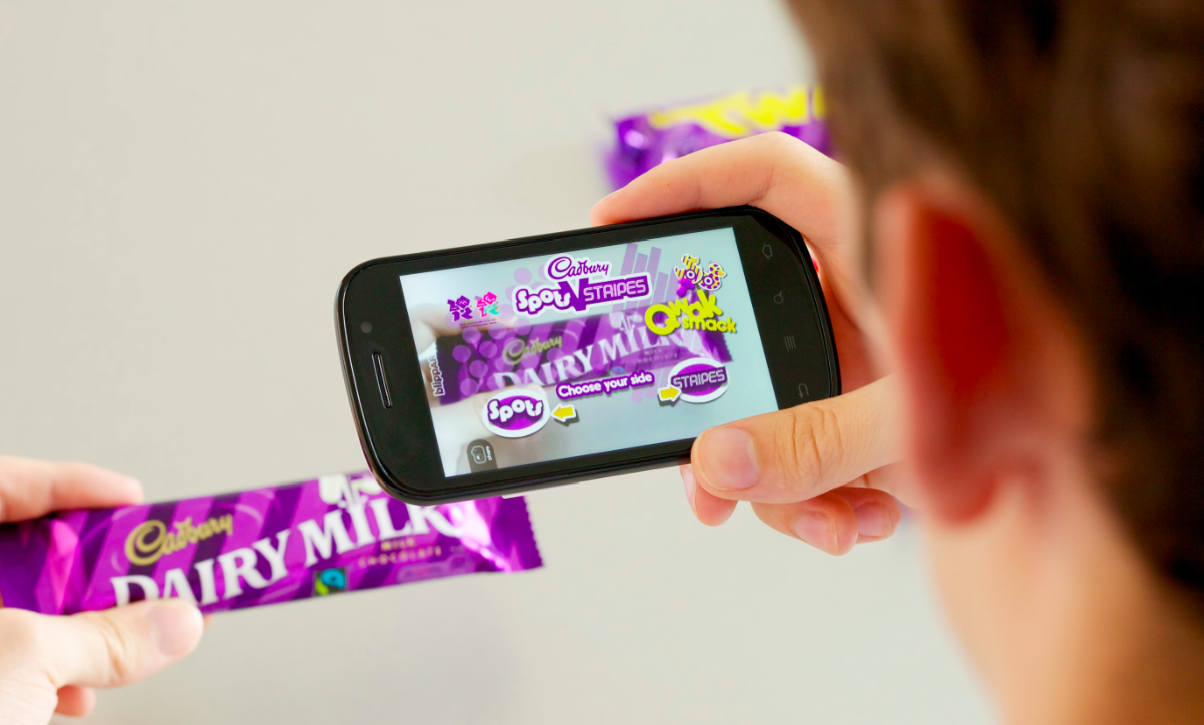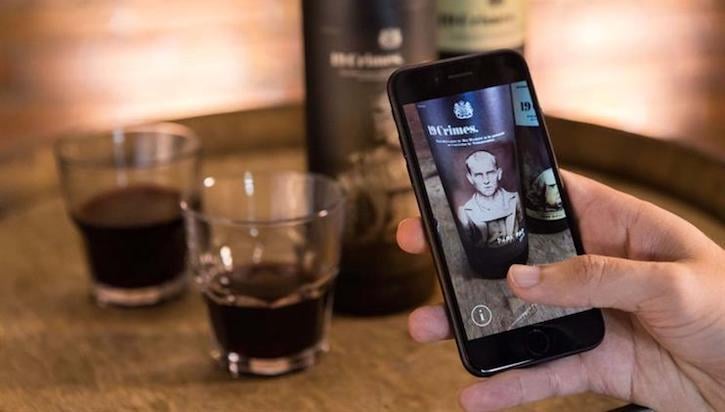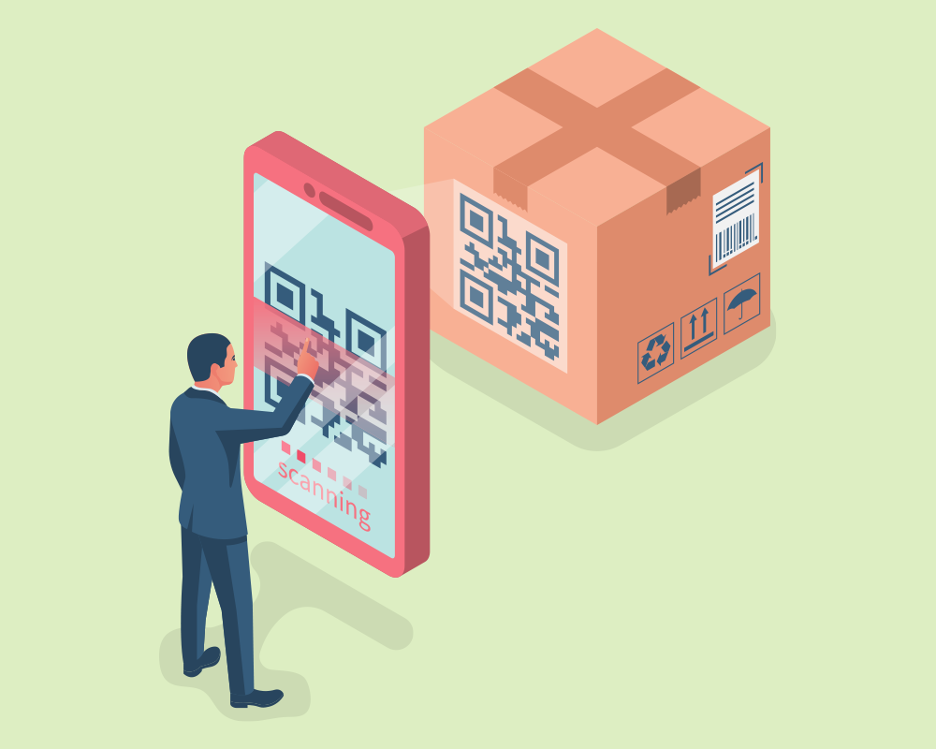Exploring Augmented Reality for Product Packaging
Packaging was once seen merely as a vessel to carry a product — only to be inevitably thrown away, repurposed, or recycled. However, cutting-edge technologies like digital print and variable data are redefining the role of packaging into an engaging and personalized consumer experience. These technologies are changing the way consumers interact with brands on and off the shelves, influencing shopping habits.
One such innovation making waves in the packaging industry is augmented reality (AR).
What is Augmented Reality?
While it may seem like a futuristic concept, early versions of AR technology have been around since the late ’60s. Unlike Virtual Reality (VR), AR does not immerse the user’s senses in an artificial or virtual environment. Instead, augmented reality uses technology that superimposes sounds, videos, or graphics onto the world we see when viewed through a smart device. By overlaying virtual information onto the real world, AR can enhance our experiences and everyday activities.

The three types of AR ‘triggers’ are marker-based, markerless AR, and location-based. These triggers help the AR application determine where to place the computer-generated content so that it aligns with the real-world image on the device screen. Learn more about AR triggers here.
From aerospace to consumer goods, a wide variety of industries use AR technology. One of the most notable applications to date is Pokémon Go. Launched in July 2016, Pokémon Go is a mobile app game that tech experts credit for catapulting AR into the mainstream. The app allows users to find and catch virtual ‘Pokémon’ hidden throughout the real world.
AR-Enabled Packaging in Action
Over the past few years, augmented reality has made its way into the packaging industry. Australian brand 19 Crimes Wine is an excellent example of a company embracing AR as a part of its packaging strategy. The brand’s name is a reference to the infamous ’19 crimes’ that could get British prisoners sent to Australia in the 18th century.

Each wine bottle features a mugshot of a former convict. Consumers can download the free 19 Crimes Wine app and hold it up to the label on each bottle. AR technology animates the label, and each convict digitally comes alive to tell their story.
These AR-enabled labels turned out to be a hit. Consumers were delighted to get a taste of history along with their glass of wine. In 2017, 19 Crimes Wine grew 60% in volume sales and 70% in value and were even named Australia’s “Wine Brand of the Year.” This campaign helped the brand successfully break into the American wine market, where they continue to win new fans with their unique packaging experience, proving that consumers are both willing and excited to engage with interactive packaging.
Getting Started with AR for Packaging
Augmented reality for packaging applications is more accessible and cost-effective than ever before. Leading brands are utilizing AR to create mind-blowing experiences that engage the user by adding a whole new dimension to product packaging (quite literally)!
When it comes to implementing AR technology into packaging, here are three steps to help you get started:
Step 1: Develop an App or Select an AR Platform
You will need a mobile app to serve as an AR-data reader. Users will download this app to access your brand’s AR packaging content. Developing a standalone app is often more effective at driving consumer traffic, although this venture can be costly. AR platforms like Blippar lower the barrier to entry for brands who may not have the resources to develop a native app.
Step 2: Pair Your App with a Trigger
After developing your app or selecting a 3rd party AR partner, pair your app with a trigger that has been integrated into your pack. For example, digital watermarks from Digimarc can serve as a marker that triggers AR content when the pack is scanned. These digital watermarks can be either visible or essentially invisible to the eye.
Step 3: Incorporate the Trigger into Your Design
The final step is to build the trigger into your artwork file. This step ensures that your packaging is ready to scan after printing. Partnering with an experienced packaging provider is essential to help provide quality assurance throughout this process.
Explore the Latest Packaging Innovations with The BoxMaker
The sky is the limit when it comes to augmented reality. Once only used by behemoths like McDonald’s and Heinz, it is now possible for up-and-coming brands to take advantage of AR-enabled packaging without breaking the bank. AR technology enables brands to deliver a richer and more unique packaging experience that can drive retail sales and leave a lasting impression.
Subscribe
Share this post
Similar Articles

Create a Connection with Personalized Packaging
Personalized packaging is custom printed for the individual consumer and can be used to improve cust …

Deliver Value to Your Supply Chain and Consumers with Smart Packaging
Smart packaging provides a new source of insights into the supply chain, logistics, sales, and consu …

The 3 P’s of Great E-Commerce Packaging
Learn the 3 P's of great e-commerce packaging: Protecting the product, promoting the brand, and plea …
